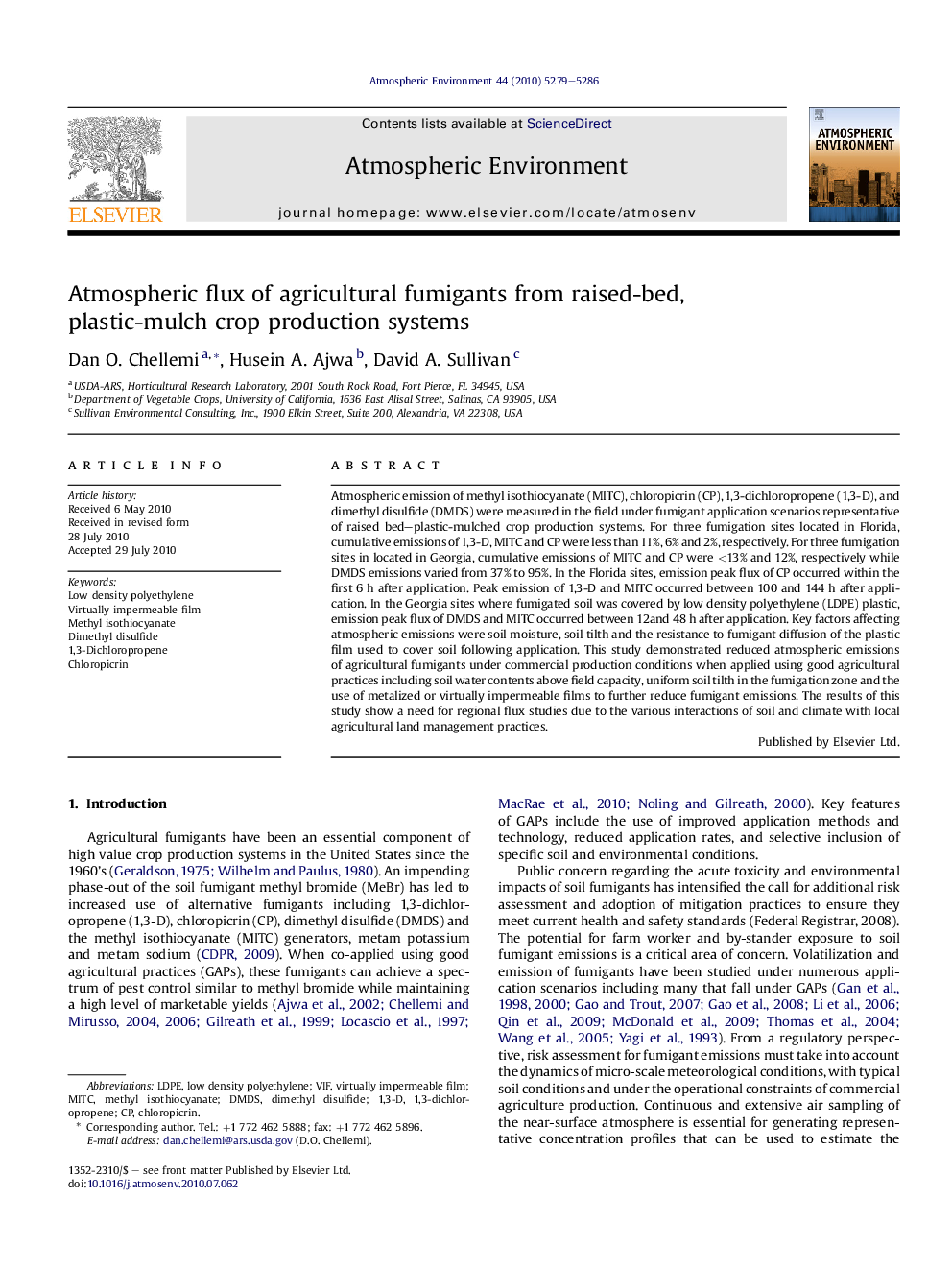| Article ID | Journal | Published Year | Pages | File Type |
|---|---|---|---|---|
| 4440477 | Atmospheric Environment | 2010 | 8 Pages |
Atmospheric emission of methyl isothiocyanate (MITC), chloropicrin (CP), 1,3-dichloropropene (1,3-D), and dimethyl disulfide (DMDS) were measured in the field under fumigant application scenarios representative of raised bed–plastic-mulched crop production systems. For three fumigation sites located in Florida, cumulative emissions of 1,3-D, MITC and CP were less than 11%, 6% and 2%, respectively. For three fumigation sites in located in Georgia, cumulative emissions of MITC and CP were <13% and 12%, respectively while DMDS emissions varied from 37% to 95%. In the Florida sites, emission peak flux of CP occurred within the first 6 h after application. Peak emission of 1,3-D and MITC occurred between 100 and 144 h after application. In the Georgia sites where fumigated soil was covered by low density polyethylene (LDPE) plastic, emission peak flux of DMDS and MITC occurred between 12and 48 h after application. Key factors affecting atmospheric emissions were soil moisture, soil tilth and the resistance to fumigant diffusion of the plastic film used to cover soil following application. This study demonstrated reduced atmospheric emissions of agricultural fumigants under commercial production conditions when applied using good agricultural practices including soil water contents above field capacity, uniform soil tilth in the fumigation zone and the use of metalized or virtually impermeable films to further reduce fumigant emissions. The results of this study show a need for regional flux studies due to the various interactions of soil and climate with local agricultural land management practices.
